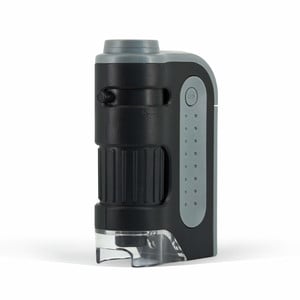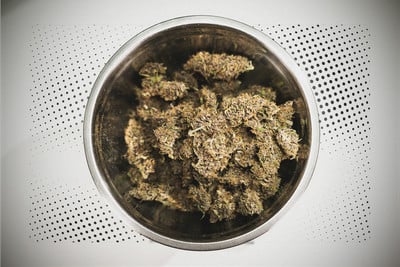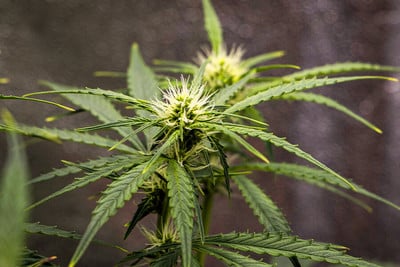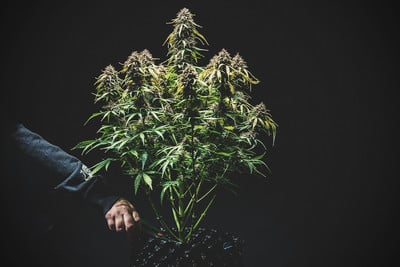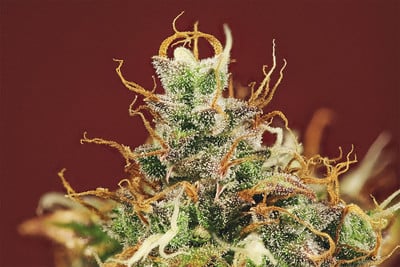.

All About Ripening Cannabis Buds
When growing weed, it can sometimes feel like not much changes during the final couple of weeks of bloom. However, on a molecular level, some of the most important work is happening. That's why it's important to know when your buds are at their ripest. Find out how to tell when buds are perfectly ripe, as well as under or over-ripe.
How do you know if cannabis buds are ripe? Is there such a thing as overripe buds? What about under-ripe? We’ll explain everything you need to know about the ripening of cannabis flowers as we go along, so you can always harvest at the optimal time. But first, a little background.
Buds on cannabis plants go by several names, including flowers, inflorescences, and bracts. In fact, the latter three are all different parts of what is colloquially known as a “bud”, with the true flower actually being the pistils. Buds grow in many places on cannabis plants, with the main one—the main cola—growing at the apex of the plant (in untrained cannabis plants).
But for the purposes of this article, we’ll keep things simpler. The whole flower will be referred to as the bud, and we’ll also discuss pistils and trichomes specifically.
Contents:
Cannabis Buds 101: Pistils and Trichomes
Pistils are the small hair-like structures that first appear at the plant’s nodes (the points where branches meet the main stem) when it enters the flowering stage, and later come to cover the buds. At the very least, you’ll know pistils as the orange-red hairs that engulf cannabis buds. In anatomical terms, they are the part of a female cannabis plant that catches pollen as it drifts through the air. They can also be used to tell when a plant’s buds are ripe (though this method is not 100% reliable).
Instead, trichomes are the best way to tell when buds are ready for harvest. These are resinous glands that grow in abundance on the outside of buds and so-called “sugar leaves”. It is inside these glands that cannabinoids, including THC, CBD, CBN, THCA, and terpenes are produced.
Trichomes change colour as they mature, and by keeping an eye on this change, you can safely estimate when the plant is at the optimal stage to be harvested. We’ll cover all of this further below.
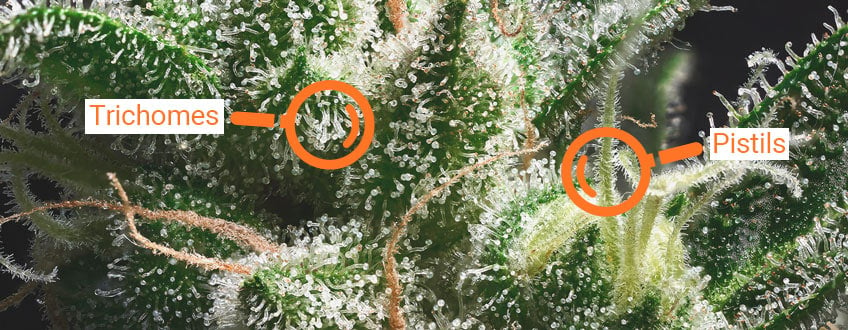
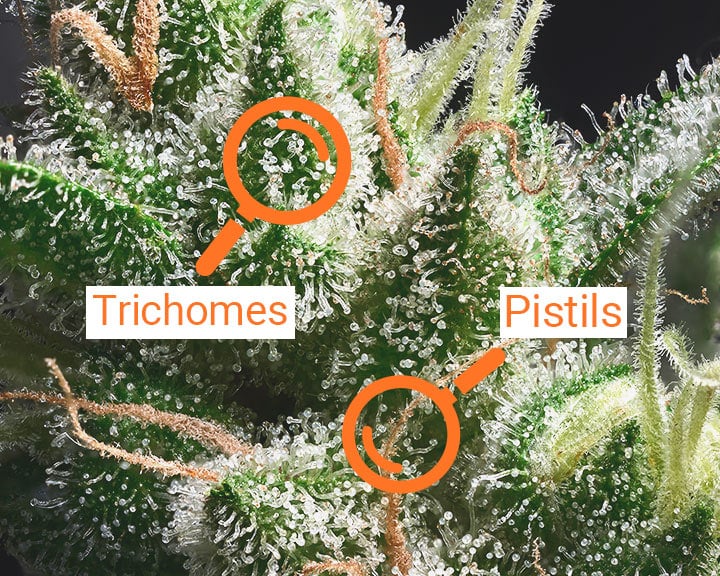
When Do Buds Stop Growing?
Regarding bud size, a simple answer is that they stop growing around 75% of the way through their flowering period.
That said, buds never really stop changing. Even after you’ve harvested them, they can go through significant molecular changes, especially if exposed to heat and light. If left on the plant, they will continue to change, up to and beyond the point of being considered “ripe”—which is when they have the peak concentration of THC.
In cultivation terms, buds should reach their maximum size by around week 6 of flowering. This is an average estimate, for a plant with an 8-week flowering period. The final portion of a bud’s life will be spent developing cannabinoids, terpenes, and other cannabis phytochemicals. Therefore, pistils and trichomes will continue to develop, but the size and shape of the bud shouldn’t change beyond this point.
How to Know When Buds Won’t Grow Anymore
But how can you actually be certain when your buds will stop growing?
First, familiarise yourself with the traits of the particular cultivar you’re growing. If you know what strain it is, then you’ll be able to find out what its average flowering period is, and from this you can estimate when the buds will likely stop growing. For some strains, you may even be able to find reputable grow reports that actually tell you when the buds will stop growing—though you can’t count on this for most cultivars.
Second, and perhaps more accurate, you can take signs from the buds themselves. If they’re a vibrant green, with white pistils and totally clear, underdeveloped trichomes, then they certainly still have a little growing left in them.
If, however, pistils are beginning to turn orange-red and trichomes are becoming milky white (with a minority turning an amber hue), then they’re approaching being mature, and it’s likely that the buds will no longer grow in size.
What if Buds Keep Growing Pistils?
Although pistils can indicate the relative maturity of cannabis buds, it is not the most reliable method to determine the overall maturity of the plant.
Sometimes, buds can mature at different rates. In fact, many growers will harvest the topmost buds first, and then harvest the lower buds slightly later on. Light exposure plays a crucial role in bud development, so those closer to the lights will finish faster. That being said, there shouldn’t be too much of a discrepancy between the upper and lower buds.
More problematic is when mature buds continue to develop new pistils, or perhaps even continue to produce new growth. Usually, this is a sign of light or heat stress. Most likely, the light intensity is too strong. You can tell this is the case if only the buds closest to the lights are affected. Usually, the flowers will become "bleached" and display an unusual white hue.
In these instances, making estimates based on bud and pistil growth will be inaccurate, and you must look to trichomes in order to determine when your plant is ready for harvest. If you do identify this problem, though—move the lights further away!
Ready to tackle pistil issues? Our beginner's guide offers step-by-step help—get it now!
Free RQS
Grow Guide!

Overripe Buds: Visual Signs
Harvesting at the right time is crucial to maximising the amount of THC within your buds. If you overshoot, then the THC will begin to break down into CBN. CBN is thought to have more lethargic properties compared to THC, leading to highs that are “heavier” and less energising.
This might sound tempting, in which case you can allow your buds to mature a little longer. But either way, it’s necessary to know at what point the buds have stopped producing THC.
What Do Pistils Look Like on Overripe Buds?
On a ripe bud, around 90% of the pistils will be red-orange.
So, if all of the pistils on your plant are this colour, then you know that your buds are probably slightly to severely overripe. At this point, pistils cease to give you much information. Once 100% have turned, there’s no way of telling whether they’re barely overripe or weeks past their prime. Given that, you must regularly check their progress so that you don’t miss the best moment to harvest.
But don’t worry—this change shouldn’t happen overnight.
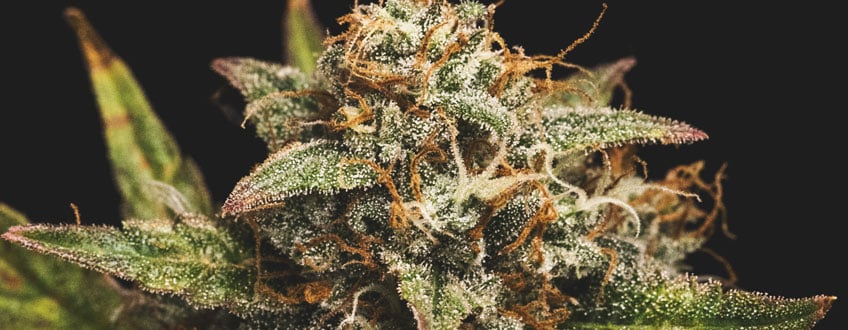

What Do Trichomes Look Like on Overripe Buds?
As mentioned, trichomes are a better way to tell if buds are ripe or not.
If you’re after maximum THC, you want the following ratio:
- 70% milky-white trichomes
- 15% clear trichomes
- 15% amber trichomes
Clear trichomes indicate underdeveloped buds, whereas amber trichomes indicate overdeveloped flowers rich in CBN. Milky-white trichomes are the sweet spot, signalling buds full of THC. So if more than 15% of trichomes are amber, then your buds are becoming overripe.
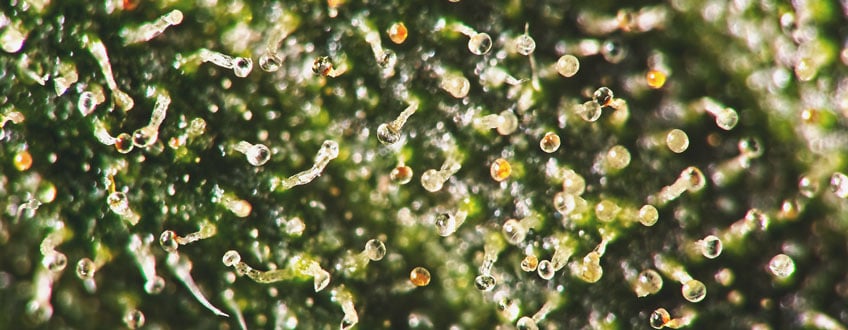
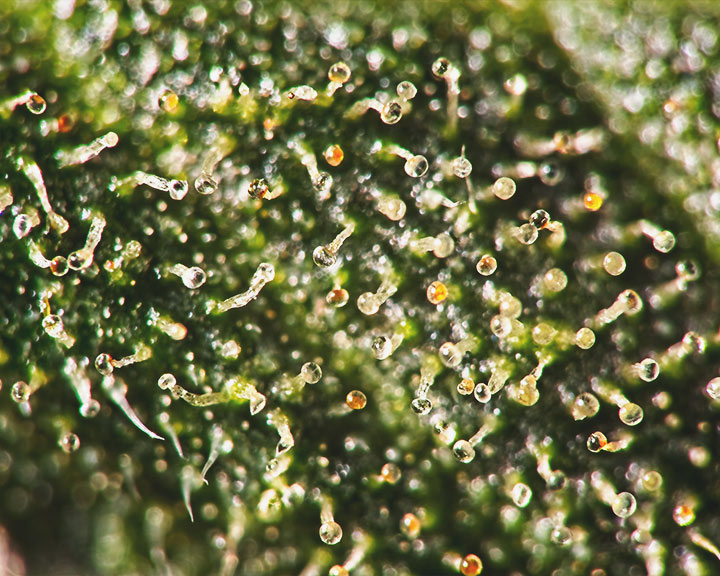
Can You Smoke Overripe Buds?
Overripe buds are usually good to smoke, and may even be desirable for those who like the properties of CBN.
One thing to be aware of is that overripe buds have a greater chance of suffering from bud rot, in which case you don’t want to smoke them! To check, break them open and look inside. If they smell bad, or seem wet and look black/brown, then they might be bad. If so, discard them. If they seem healthy, they’re good to be smoked.
Under-Ripe Buds: Visual Signs
It’s also important not to harvest too early, as your impatience will sacrifice precious cannabinoids.
Here’s how to identify under-ripe buds.
What Do Pistils Look Like on Under-Ripe Buds?
Under-ripe buds will be covered in white, immature pistils. The exact amount can range from around 11% all the way to 100%. Remember, around 90% of pistils will be red-orange on perfectly ripe buds (usually).
There’s no way to be exact when estimating bud maturity off of pistils alone. But if most of them are still white, and you’ve ruled out heat/light stress, your buds are probably not yet mature, so hold on!

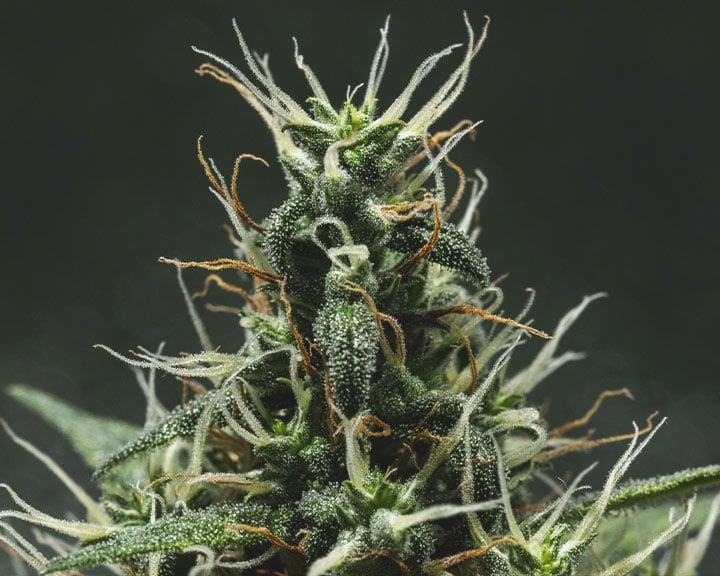
What Do Trichomes Look Like on Under-Ripe Buds?
As mentioned above, underdeveloped trichomes are clear in appearance. If more than 15% of the trichomes on your buds are clear, then they are under-ripe, and you’ll have to hold off on harvesting for a little while.
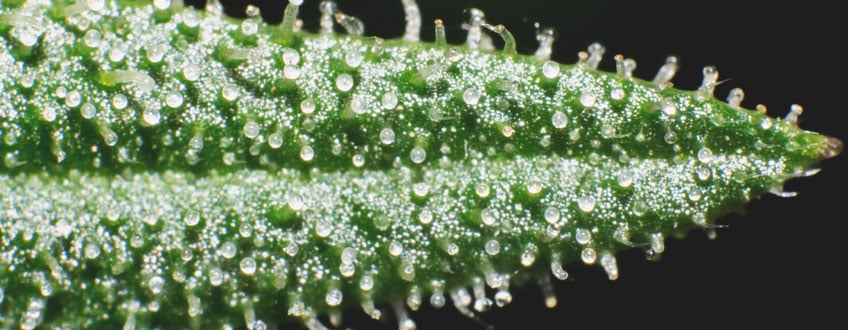
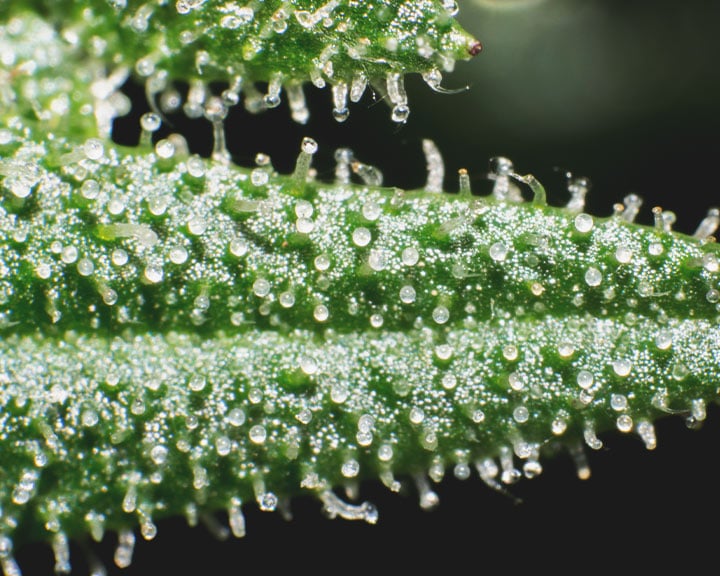
Can You Smoke Under-Ripe Buds?
You can, and—depending on how under-ripe they are—still experience some notable effects. However, these buds won’t be as potent, or flavourful, as they could be.
The further away from being ripe a bud is, the weaker the effects and the less impressive its flavour. So you will be rewarded for patiently awaiting the right moment to harvest.
Why Are My Buds Not Filling Out?
You might be waiting out the allotted flowering time and noticing that your buds are not fattening up, which leads you to despair: “Why are my buds so small?”.
There are many reasons that flowers might stay small or become “popcorn” buds, as they are known. Put simply, if buds aren’t developing properly, there is almost definitely something wrong with their environment or genetics. But fear not; below we outline what those issues could be.
🗓️ It’s Too Early
The best-case scenario is that you’re expecting too much too soon. Buds will appear near the beginning of the flowering period, but they’ll stay pretty small until at least week 4, and perhaps even later depending on the strain. So if they’re fairly young buds, give them some time to develop before you start worrying that your harvest is underwhelming.
💡 Low Light Levels
This is perhaps the most likely reason for small buds. To get the monstrous nugs everyone wants, plants need a lot of light.
Weak or poorly positioned lights will not give your plants enough light intensity to develop optimally. In many cases, this might be due to using low-quality lights. This is especially likely if you’re using cheap LED “grow lights”.
While LEDs can be brilliant for growing, they need to be of a certain quality. There are many lights categorised as grow lights that are actually insufficient for growing cannabis.
Likewise, small buds can be caused by an insufficient amount of light. For photoperiod plants, you want to give them 12 hours of light a day. For autoflowering plants, it can be anywhere between 18 and 24 hours per day.
🌿 Re-Vegging
If you mess up the light cycle during the flowering stage, plants will experience significant stress, and can even revert back to the vegetative stage as a result. In this case, bud development will cease, and new, rounded leaves will appear.
This is a strange, and admittedly quite magnificent, phenomenon, but it’s no good for bud development!
Unless you’re growing a clone, monster cropping, or you’ve changed lighting setups, the most likely explanation for reversion is that light is slipping in during the dark cycle. Even ambient light from street lights and phones can cause issues.
🧬 Bad Genetics
Sometimes, a plant might just be doomed to be underproductive. Even the best breeders produce dud seeds once in a while, and unreliable breeders produce them quite often!
If everything else appears good, and your buds still won’t grow, it may just be that you landed a poor-quality seed.
⚠️ Stress
As alluded to, stress can significantly affect bud development on a cannabis plant. This is especially true if the stress is severe, or comes at a crucial time during the plant’s development.
If a photoperiod plant becomes stressed in the veg phase, then consider giving it a week or two longer to recover before switching it over to bloom. With autoflowering plants, it's best to limit stress altogether.
Sources of stress include:
- High-stress training techniques
- Underwatering
- Overwatering
- Underfeeding
- Overfeeding
- Pests and disease
All of these stressors mean that the plant needs to dedicate a lot of energy to recovery, which means it can’t dedicate energy to growing buds.
Can You Make Buds Mature Faster?
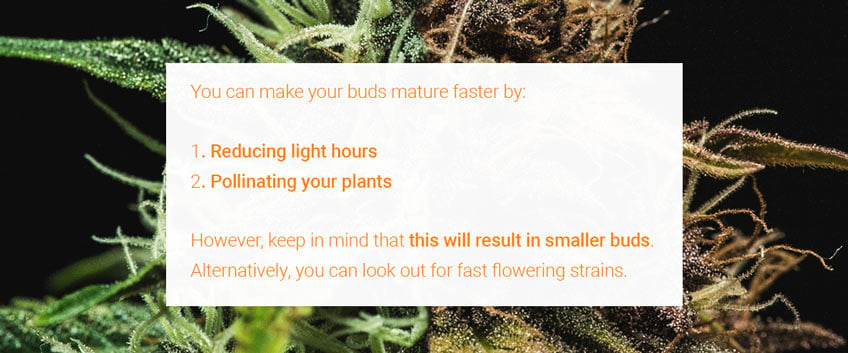
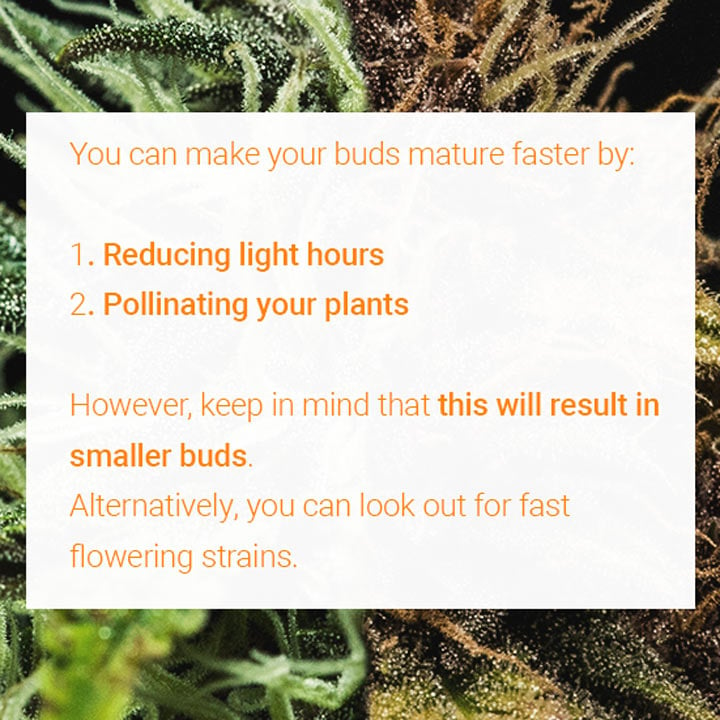
Technically you can, but it’s not usually worth it. Techniques that make buds mature faster will also reduce the final yield significantly.
First, you could reduce daily hours of light. This mimics the coming of winter and causes plants to accelerate maturation, but also limits the energy they have available to grow in size. So unless you have some pressing need to harvest soon, this option is probably not worth it.
Second, you could pollinate your female plants, which will also cause them to mature faster. However, as they’re pollinated, they will no longer focus energy on bud growth. So, once again, you will get smaller buds.
If you really want your buds to mature quickly, your best bet is to choose a strain with a short flowering time; perhaps an indica auto, rather than a sativa photoperiod, for instance.
Cannabis Buds FAQ
- When do cannabis buds grow the most?
- Cannabis buds tend to grow most during weeks 4–6 of flowering.
- Will my cannabis buds get bigger in the last 2 weeks?
- Not really—instead, buds focus energy on maturing the pistils and trichomes.
- Can you trim cannabis fan leaves during flowering?
- Yes, you can defoliate during the flowering stage. Don’t overdo it, though, and leave a couple of weeks between each pruning session to avoid stressing your plants.
- Do buds get bigger in the dark?
- Yes. In fact, plants do most of their growing during the night. During the day, plants produce sugars, which they then use for cell growth during the night.
Timing Is Everything
After months of growing, it’s important not to be hasty. Once your buds are nearing maturity, keep a close eye on them daily so you can harvest at the best possible time.
Moreover, try out methods to grow super-dense buds to get even more out of your grow.
Growing cannabis is all about patience and care, and these are skills that will do you well in all areas of life. With the information above, you should find it much easier to grow large, healthy, and perfectly ripe cannabis buds.


























